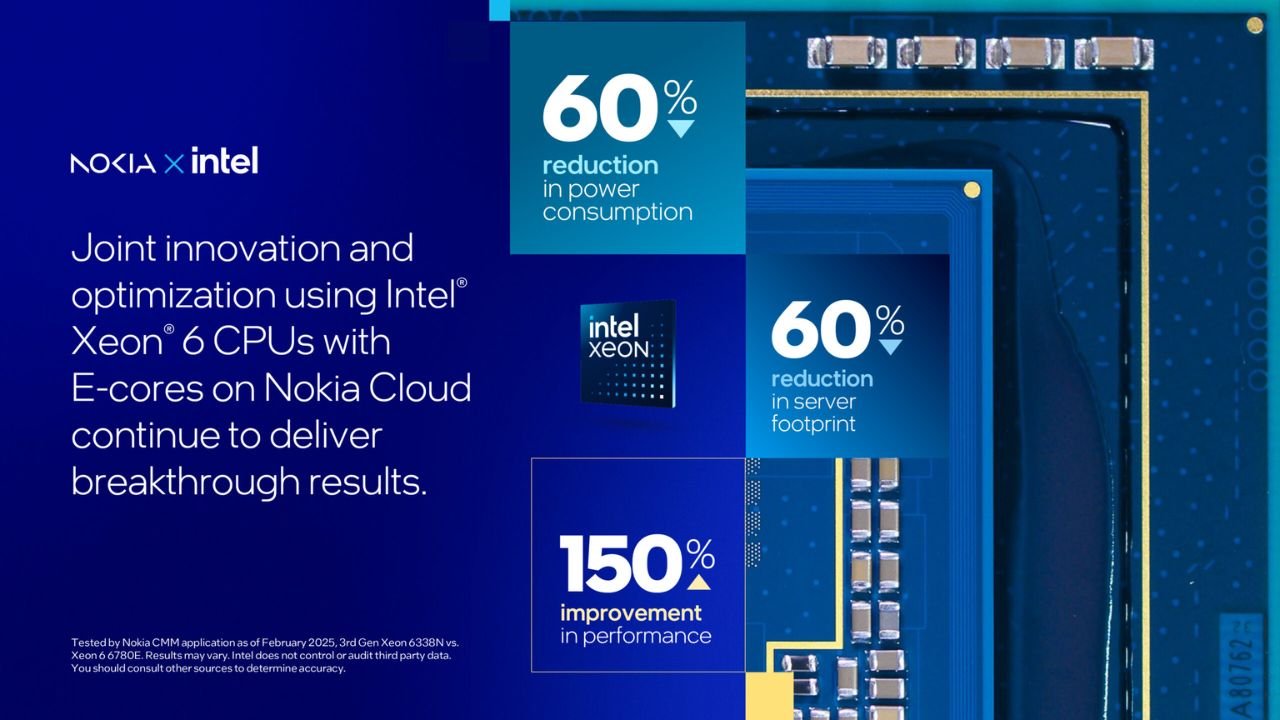Nokia’s 5G Revolution Begins: Intel Xeon 6 Makes It Eco-Friendly & Powerful
Hey guys! Have you ever wondered how to make 5G networks faster, cheaper, and eco-friendly? If not, today’s post is for you! Intel and Nokia have done something amazing together that will shake up the telecom industry.
With Intel Xeon 6 processors, Nokia’s 5G core networks now consume 60% less power and deliver 150% more performance. Amazing, isn’t it? Let’s talk about this technology in detail and see why it matters to you.
Intel Xeon 6 and Nokia’s Game-Changing Partnership
The Intel and Nokia pairing is an old one, but every time they bring something new. This time, the Efficient-cores (E-cores) of Intel Xeon 6 processors have been used in Nokia’s NFVI v5.0 and core network applications. The result? A 5G network that is not only faster, but also saves power and takes up less space.
60% Less Power Consumption
Compared to older generation servers, Xeon 6 E-cores reduce power consumption by up to 60%. That means lower electricity bills and an eco-friendly network!
150% More Performance
Whether it’s data processing or 5G workloads, these processors deliver 150% better performance.
60% Smaller Server Footprint
Fewer servers needed, that means space savings in data centers.
“The combination of Xeon 6 E-core processors and Intel Infrastructure Power Manager (IPM) makes 5G networks the most energy-efficient,” said Alexander Quach, Intel VP and GM of the Wireline & Core Network Division.
Why is it so special?
5G networks are the future of today’s world. But along with faster speeds, telcos also need to reduce power consumption and costs. This solution from Intel and Nokia solves this problem.
Load-aware computing
Intel’s Infrastructure Power Manager (IPM) adapts power use to the load on the network. This means that when traffic is low, less power is used.
Lower operational costs
Less power and smaller server setups mean lower costs for telco operators.
Reduced carbon footprint
Less power use also has a positive impact on the environment.
Network stability
Along with faster performance, network stability is maintained.
Kal De, Nokia’s SVP, put it further: “Our joint IPM trials show that together with Intel, we can deliver scalable and energy-efficient solutions.”
What does this mean for you?
Now you might be thinking, “This is about telcos, what do I have to do with this?” But wait, this technology will touch your life too!
Faster 5G speeds
Whether you’re streaming video, gaming, or working-from-home, the power of Xeon 6 will make 5G networks smoother and faster.
Cheaper data?
Lower operational costs mean telcos can make data plans more affordable in the future.
Eco-friendly future
With lower power consumption and carbon footprint, you’re contributing to a greener planet.
Nokia’s trials and future
Nokia has already conducted cloud service provider trials with Intel Xeon 6 and IPM, and the results are impressive.
The technology works with multiple server generations and delivers real-world energy savings. Soon, the technology will be available in Nokia Packet Core Application v25.7, which is set to be released later this year.
Future of technology
This partnership between Intel and Nokia is not just limited to 5G. This technology can support data centers, cloud services, and even AI workloads. You can check more details by visiting Intel’s website.
One last thing
The Intel Xeon 6 and Nokia duo has given a new meaning to 5G networks. Less power, more speed, and a smaller footprint – this is the future!
So, are you excited about this technology? Let us know in the comments how you liked it and if you would like to be a part of this new revolution of 5G.


